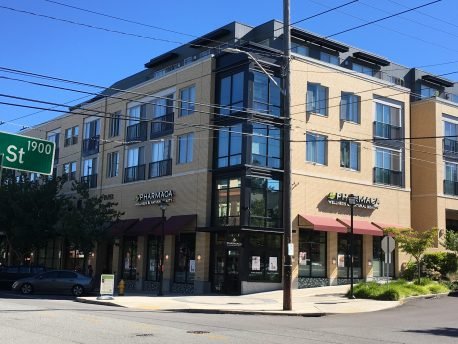Unreliable Safeway and Thriftway memories prove you don’t always get what you wish for!
Memoirs retell important experiences in human lives, but I think they are unreliable history. This story is my memory of efforts to stop the construction of an expanded Queen Anne Thriftway in 1990 and to block a new Safeway megastore on its nearly full block site in 1993. As sure as I am that these events actually took place, I worry about the details.
First a couple of facts: I live a bit east of both sites on First Avenue North. In 1990, I was the director of the Seattle Children’s Museum, and the Queen Anne Thriftway was a major donor. Talk about conflicts of interest! During this period, the state passed the Growth Management Act which prompted the city’s first 35-year master plan. That plan encouraged new zoning requirements and created urban villages including one on upper Queen Anne that runs west on Galer and stretches alley-to-alley on either side of Queen Anne Ave. N. except at Safeway where it extends to my street. I love the master plan. It called for increased density in the ‘village’ while protecting the surrounding single-family housing we cherish. The property owners of both the Thriftway and Safeway sites may have been trying end runs around the master plan before it became law in 1993.
In about 1990, the Cox family, who owned the Thriftway site, collaborated with Dick Rhodes, the store’s owner, to replace the building with a low-rise structure covering the entire site. The idea to build a store with underground parking and a much bigger footprint on the land provoked neighbors who, while loving the Thriftway, had no desire for a larger store with apartments plunked on top of it. Ours was an anti-density push that reeked of nimby-ism and an unwillingness to see the neighborhood change.
Queen Anne Thriftway, 1964
I was among the people who prevailed at public and design review meetings. I was also among those who cheered when the ownership abandoned the project. Seattle’s up-and-down economy, along with national busts in both 2001 and 2008, helped preserve the existing fabric of the neighborhood. At that time, we didn’t worry about preserving the Elfrieda Apartments at Crockett and Queen Anne Ave. or either bungalow on Crockett which shared the same ownership. Later the Cox family working with Kroger tried again to redevelop the site for a big QFC. That idea failed, mainly because Kroger didn’t have the resources to buy into the massive undertaking. Ultimately developer Joe Geivett of Emerald Bay Equity acquired the site along with the Elfrieda and the bungalows. Tearing down everything on the half-block for a multitude of shops below and 140 apartment units above, Joe tried to lease the store in his new building to Thriftway under its new Metropolitan Market banner, but the numbers didn’t work. After closing its doors in 2012, Met Market abandoned the top of the hill, focusing on the new store down the hill where it had taken over the bankrupt Larry’s Market. No laggard, Trader Joe’s snapped up a part of the space.
The Safeway’s 1993 redevelopment ideas struck me as even worse than those for Thriftway. Safeway touted the construction of a megastore which would attract shoppers from around the region. I don’t remember how many floors of apartments Safeway and its architect Val Thomas proposed, but we hated it too. The idea of a massive influx of automobiles choking our pleasant hilltop neighborhood appalled us. We didn’t look at the quality of Val Thomas’s design, perhaps because we were conflicted. We all knew Val as the architect of the marvelous preservation project at West Queen Elementary. Indeed, Val lived there in a fantastic condo he converted from the gym. Val also impressed us with his work at Capitol Hill’s Broadway Market. In the end, Safeway relented, adopting an addition by Thomas that obscured its historic rainbow roof (it is still there) and the under-scaled clock tower at Crockett and Queen Anne Ave.
Alas, when you try to protect the fabric of your neighborhood, you never know what you are wishing for. Now I see that our hostility may have been a mistake. If Metropolitan Market had built a modest building on Queen Anne Ave. N., we’d have been spared the huge development that sits there now, and we might still have our cherished supermarket and Elfrieda with her two bungalow sisters on Crockett. Now comes Safeway this year with a scheme to build out and up. We don’t know what it will look like, but our success in 1993 left the parking lot fallow ground awaiting Seattle’s next big boom and Val Thomas’ sensitive design unbuilt.
My tale is a cautionary one. Think big when you oppose increased density or up-zoning, and don’t forget you don’t always get what you wish for.
Now you have my memories and the opinions they shape. They may be false. I sort of hope they are, for the errors will prove the unreliability of memoirs. I promise to follow up with new information from folks who correctly remember these grocery store battles. Better yet, I could research the facts!





